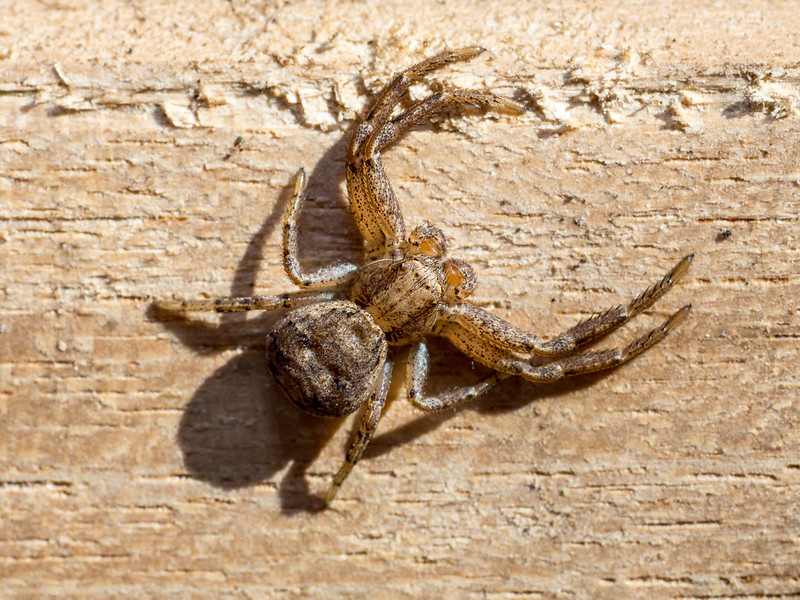Well at least I think so!

During the past couple of summers here in Wisconsin I’ve noticed these spiders on the house and garage, but too high up for me to get a good look, much less a picture. So when my husband came in the house and said he saw a red and brown spider on the cement by the remote garage, I headed right out. Almost trod on the poor wee girl.

Ok, so she’s not that wee. With her legs relaxed like in the shot above, she’s about the size of a quarter. Good sized, but nothing like the girls that live on the dock. She was very patient though and a great model, letting me get her best side!

She’s an araneus marmoreus aka marbled orb weaver and according to my book, the females leave their webs up in small trees and bushes (or garages, you know, whatever works) and descend to the ground to lay their eggs. Judging by the somewhat deflated look of her abdomen, this female might have done that recently and is looking for a place to hole up for the winter. Or die. Many spiders die after only one mating season, but fortunately they leave the little ones behind as legacy.

Just look at the jaws on her! Orb weavers get their name from the shape of their webs – it’s that traditional round, net-like web that Charlotte wove in the famous book by E.B. White. This particular species usually stays out of sight under a leaf or similar shelter. She keeps at least one leg in contact with a special line of silk that, when the web is touched, will signal her that there’s something in it. Once the trap line is triggered and she springs from hiding onto the web, whatever is stuck there is lunch.
As you might have figured, all these images were made in natural light with the legacy Olympus 90mm macro with the 25mm extension tube. I hardly did any cropping! Seriously, she basically fills the screen when I focus down to nearly the closest distance I can work from.
Same with this bonus spider!


Great shots! And I love the boardwalk photo at the top of your page. You’ve probably already done this, but if you do a Google Image search for spider pedipalps, you get a lot of photos of all different kinds of spider pedipalps — some quite different looking.